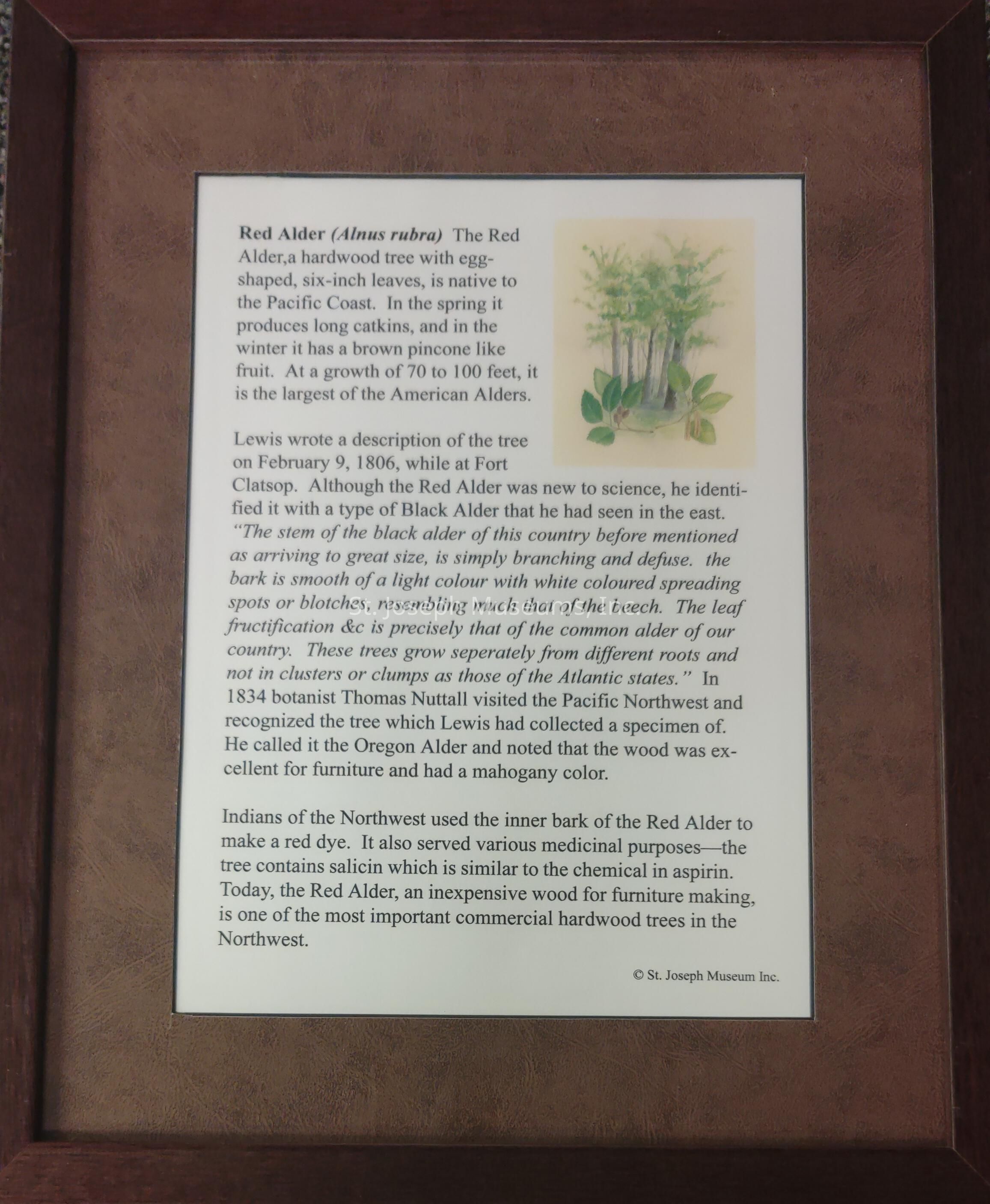Name/Title
Red Alder (Alnus rubra)Entry/Object ID
2021.1.49 BScope and Content
Red Alder (Alnus rubra) plant description, framed.
The Red Alder, a hardwood tree with egg-shaped, six-inch leaves, is native to the Pacific Coast. In the spring it produces long catkins, and in the winter it has a brown pinecone like fruit. At a growth of 70 to 100 feet, it is the largest of the American Alders.
Lewis wrote a description of the tree on February 9, 1806, while at Fort Clatsop. Although the Red Alder was new to science, he identified it was a type of Black Alder that he had seen in the east. "The stem of the black alder of this country before mentioned as arriving to great size, is simply branching and defuse. the bark is smooth of a light colour with white coloured spreading spots or blotches, resembling much that of the beech. The leaf fructification &c is precisely that of the common alder of our country. These trees grow seperately from different roots and not in clusters of clups as those of the Atlantic states." In 1834 botanist Thomas Nuttall visited the Pacific Northwest and recognized the tree which Lewis had collected a specimen of. He called it the Oregon Alder and noted that the wood was excellent for furniture and had a mahogany color.
Indians of the Northwest used the inner bark of the Red Alder to make a red dye. It also served various medicinal purposes - the tree contains salicin which is similar to the chemical in aspirin. Today, the Red Alder, an inexpensive wood for furniture making, is one of the most important commercial hardwood trees in the Northwest.Context
Originally designed by the St. Joseph Museum in the fall of 2004. Titled "Botanical Wonders of the Uncharted West. The Recorded Flora of the Lewis & Clark Expedition."Collection
Lewis and ClarkLexicon
LOC Thesaurus for Graphic Materials
Botanical drawings, Expeditions & surveysArchive Items Details
Title
Red Alder (Alnus rubra) WatercolorCreator
Mary L. FletcherDate(s) of Creation
2004Subjects
Plants, Watercolor paintingsParts
Count
2Parts
Watercolor of plant and descriptive label, both framed.Condition
Overall Condition
Very GoodProvenance
Notes
"Botanical Wonders of the Uncharted West" visually depicts how well Lewis followed Jefferson's instructions. In recognition of this achievement, The S. Joseph Museums, Inc. commissioned accomplished artist Mary Fletcher to create fifty (50) selected paintings of flora documented by the Corps during their Journey. These framed watercolor originals are accompanied by similarly framed labels, generated by former Head of Research Jackie Lewin, which describe the corresponding plants with appropriate quotations from the Journals. This collection makes available for study and appreciation plants that were new to Lewis and Clark, but which Native Peoples already recognized as valuable sources of food, medicine, and tools. Some of these still remain a mystery to many, but all will enjoy their beauty, their diverse uses, and their accomplished renderings.
